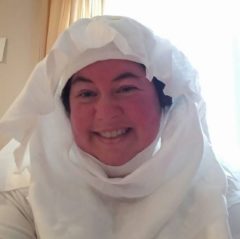Welcome back! We’re jumping right into the next weave for the MIDDLE KINGDOM!

The Birka (or Björkö) digs are some of the most famous of Norse historical finds because they are SO PLENTIFUL and have items from all over Europe! Located 30 km West of Stockholm, this trading city was founded in 750 AD and was under the protection of the King of Sweden, whose home was just a couple miles away. During the 200 years the island saw trade activity, goods came from all over Europe, as far away as the Middle East, as evidenced by a silver ring from a Viking-era grave with an Arabic inscription from that era found in Scandinavia. They have also found rare items like Chinese silk, Byzantine embroidery, pottery from Rhineland, furs and antler combs from the Sami people in Finland and Russia, and a number of silver Islamic coins called Dirhams. The trading center at Birka closed rather suddenly around 960 AD, and trade activity relocated to Sigtuna, though the reasons for the shift are disputed. Some suggest that it may have been due to land rebound from the post-glacial period; that the topography changed significantly enough to make Birka difficult to access by sea. The complete collection of archaeological finds from the excavations on Björkö are held by The Swedish History Museum in Stockholm, and many of the artifacts are on display there.
Quite a number of tablet woven fragments were found in the excavations, including today’s project, known as Birka 12, grave find 735.
Many of the bands were done in a style known as brocaded card weaving, where precious metals were woven into the surface of the tablet weaving, creating a beautiful (and shiny) pattern. Some of the pieces have rotted almost completely away, leaving only the metal threads, which still bear the impressions of the patterns on top.
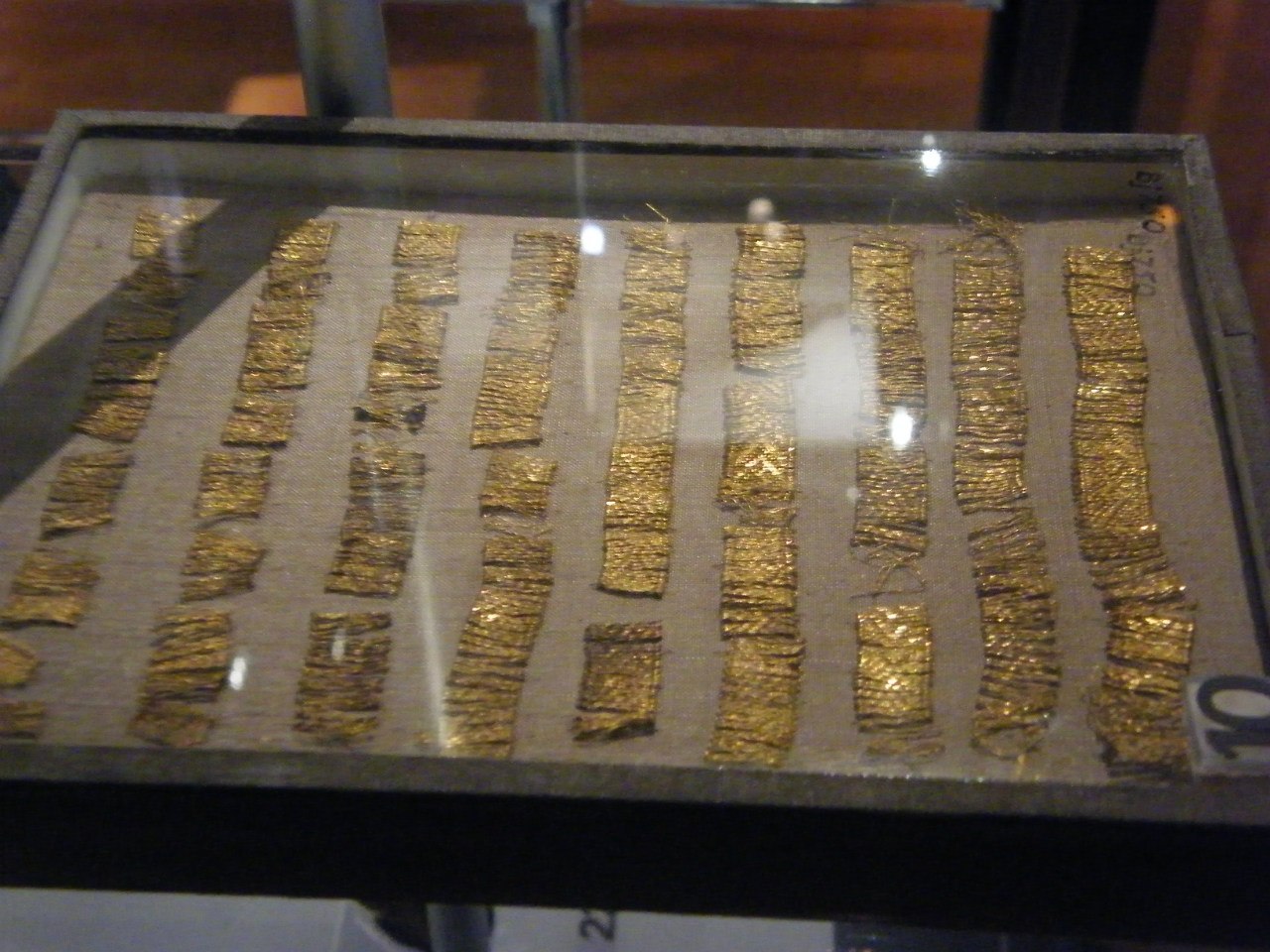
From these finds, designs sketched up as to what the patterns may have looked like 1200 years ago.

However brocaded card weaving is a very advanced form of weaving, and other tablet weavers have created patterns using the threaded in technique based on these designs. This is the pattern for the one we will be doing today. I have also added a lovely braided border on the edge for a little extra fun!
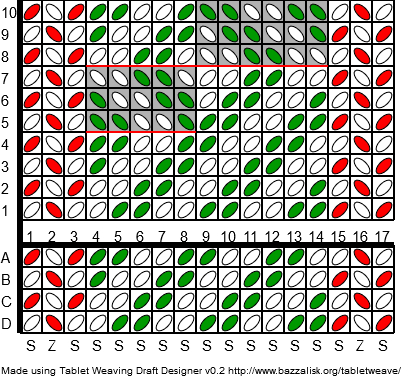
So get your 17 cards and either 2 or 3 colors of yarn, and let’s get warped!
Remember to face your clockwise-labeled cards to the right (counter-clockwise to the left) and thread according to the S and Z on the chart below (S through the left side of the card; Z through the right side).
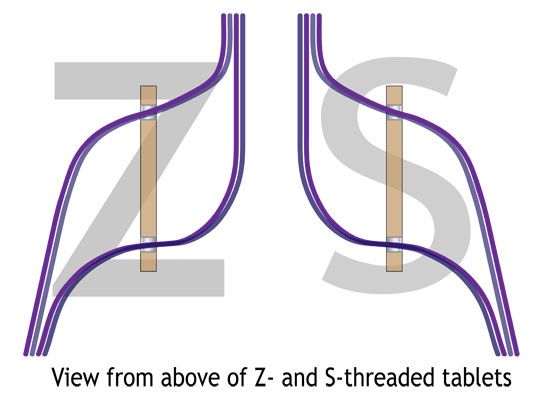
Once your cards are all threaded according to the pattern, begin by turning all the cards forwards, throwing the shutting through the shed after each pick. Tighten up your weft threads after a couple of passes until the warp threads are snug against each other, but not misshapen.
Start your cards with AD at the top for this pattern (like most of them out there) and begin by turning your cards forwards–away from you– for four quarter turns.
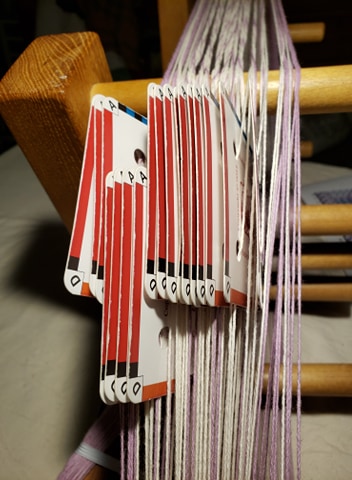
Then separate your cards into two packs–cards numbered 4-8 slid towards you, and the rest of the cards away from you. Turn those cards in opposite directions (1-3 and 9-17 forwards; 4-8 backwards) for three quarter turns, throwing the shuttle after each pick.
Then change directions for those inner cards–1-8 and 15-17 will turn forwards and 9-14 will turn backwards for 3 quarter-turns. Once all the cards are in their ‘home’ position (AD at the top), repeat the pattern by turning all cards forwards 4 quarter-turns.
Then the border threads become over-twisted, flip the cards (so S becomes Z, and Z becomes S) and continue weaving as before.
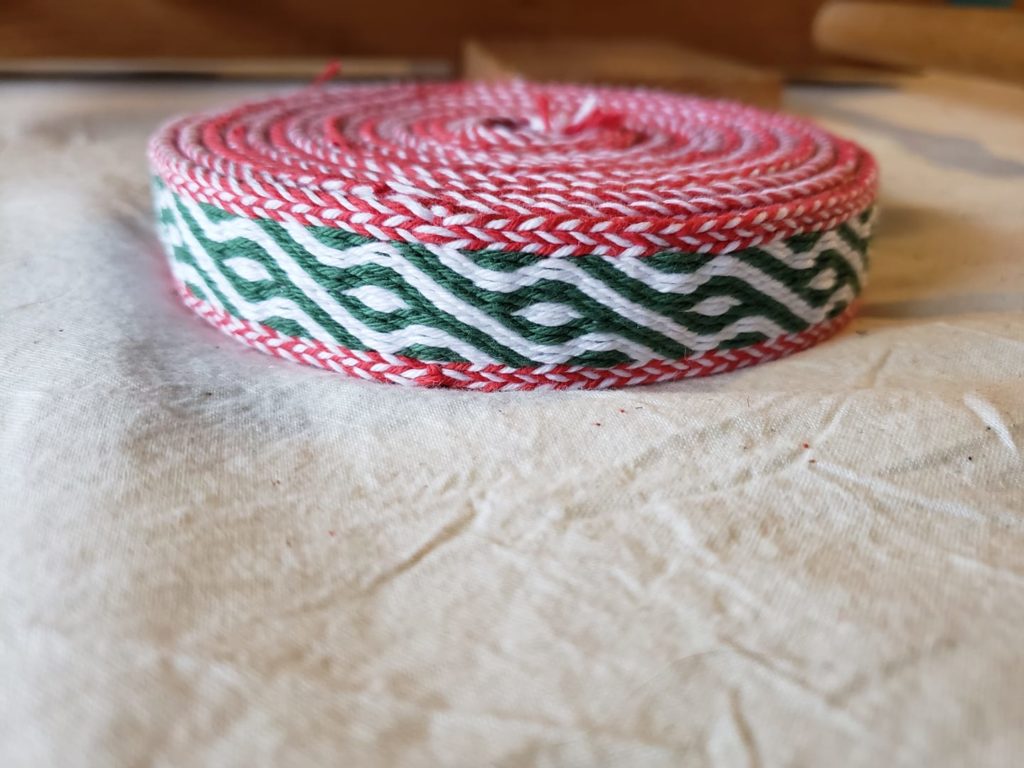
If you want a bigger challenge, you can try the skip hole version, found in “A Simplified Guide to Historical Tablet Weaving.” by Dagný Svensdóttir and Bjorn Sæmundarson. I’ll be doing this one in An Tir colors! (As I do not yet have permission to publish the pattern, I cannot supply it here at this time.)
